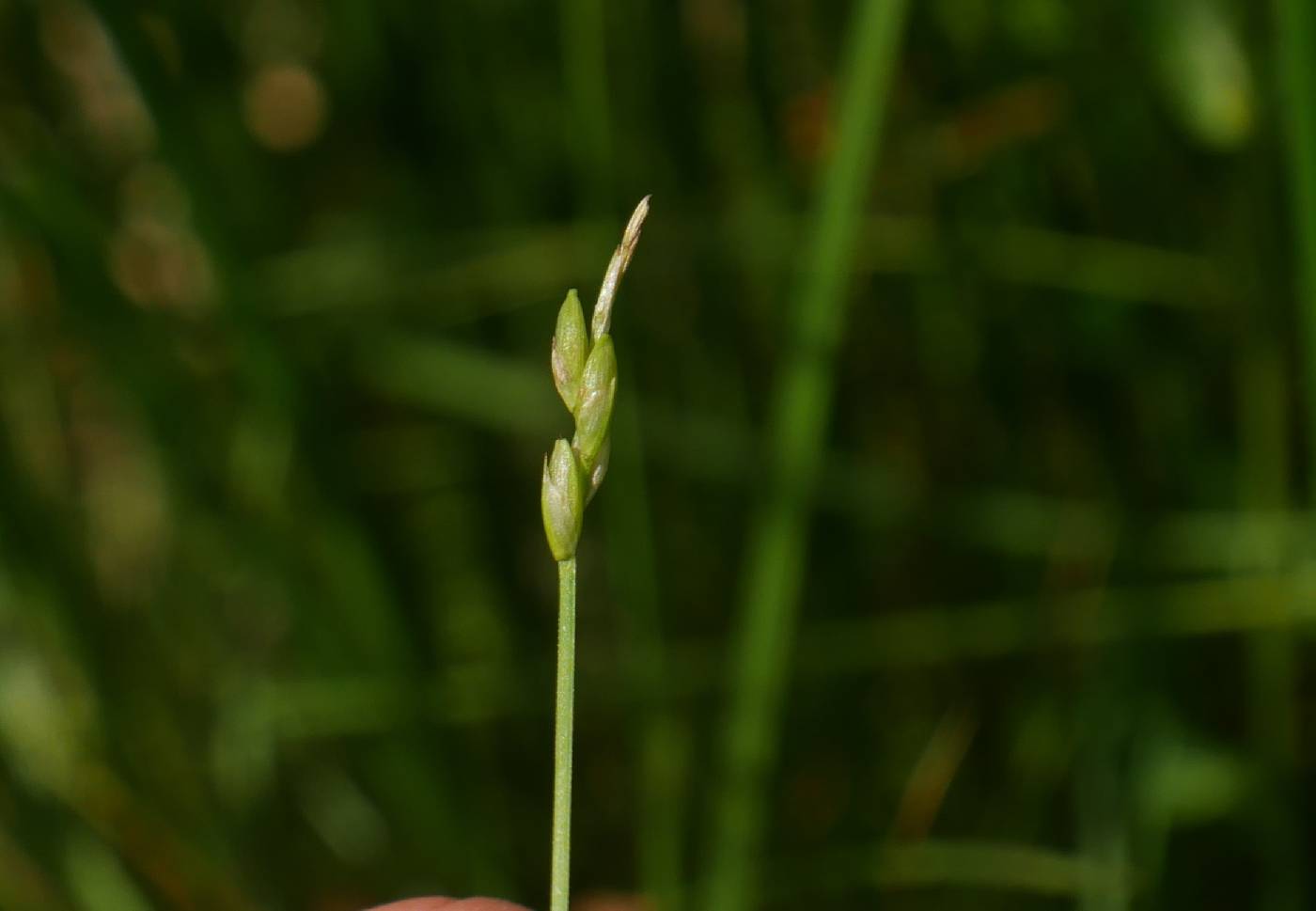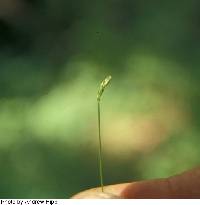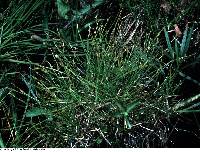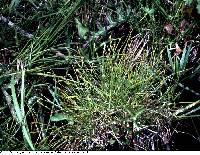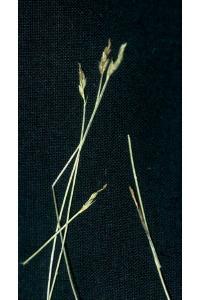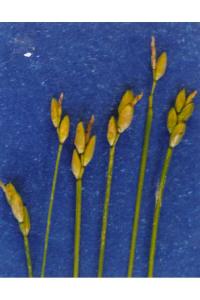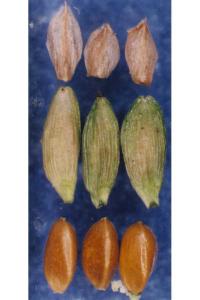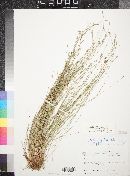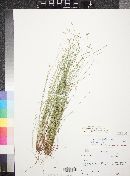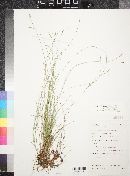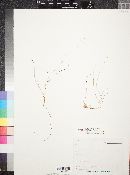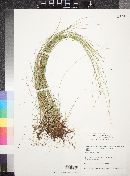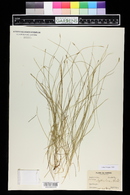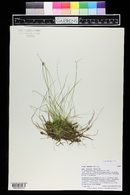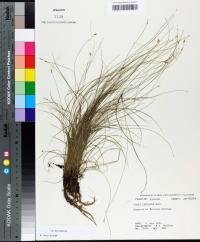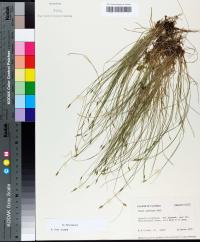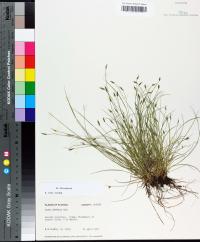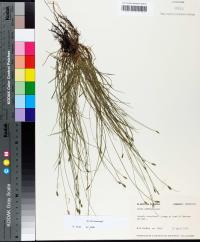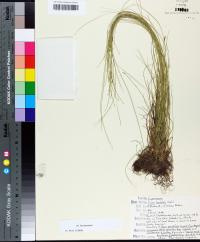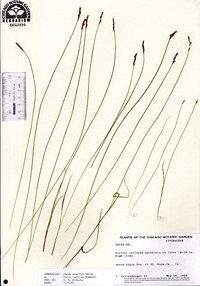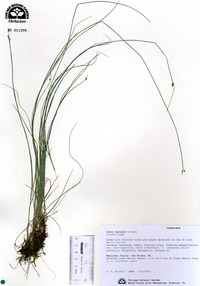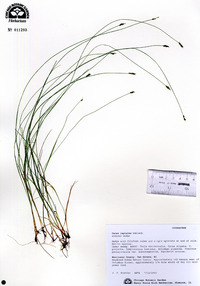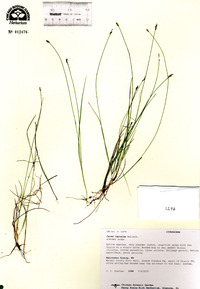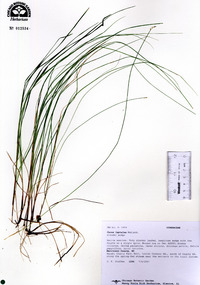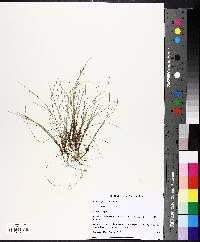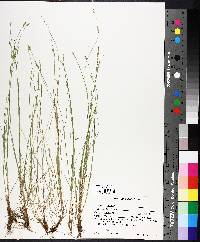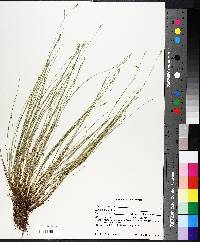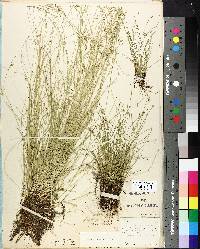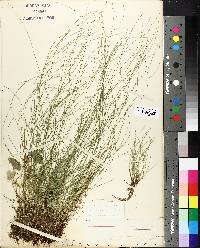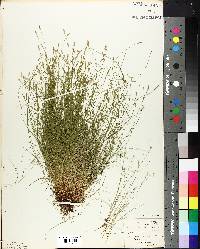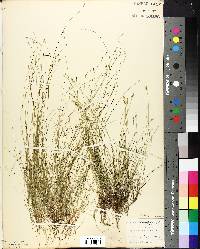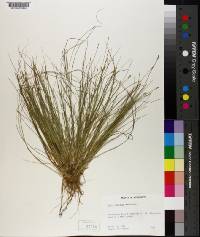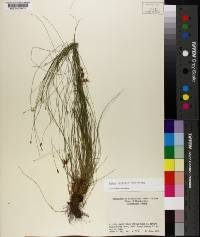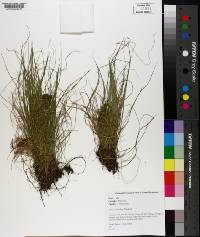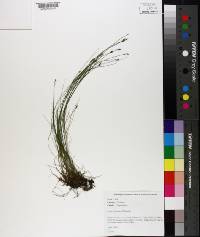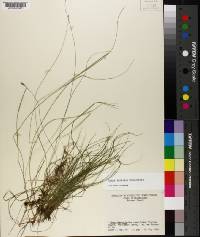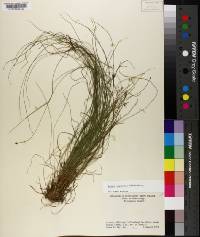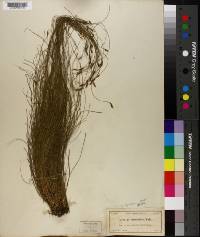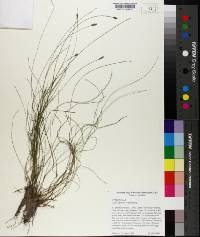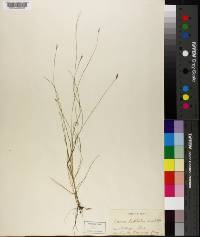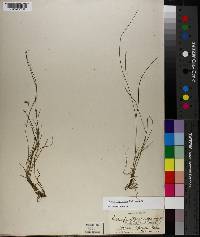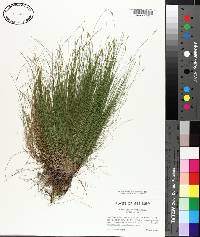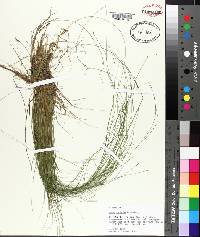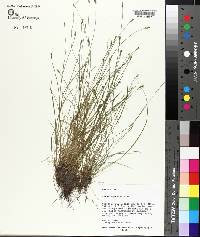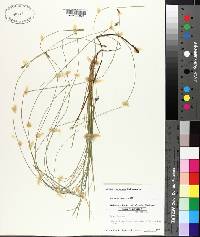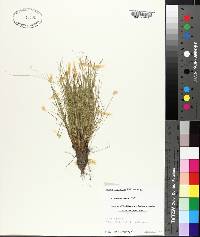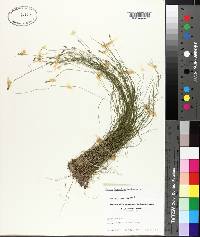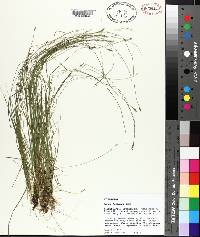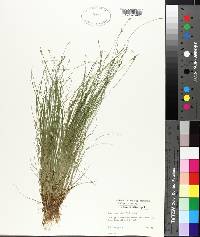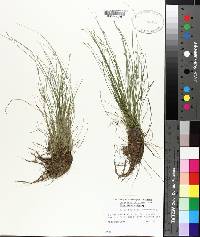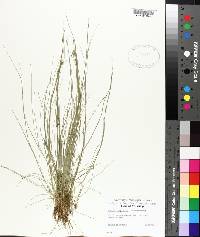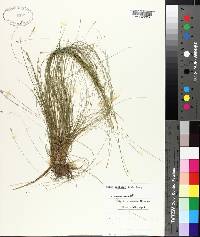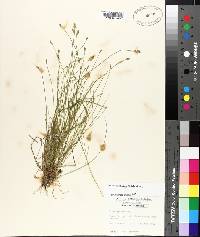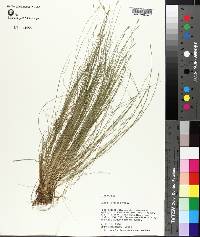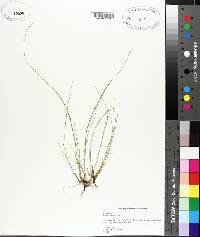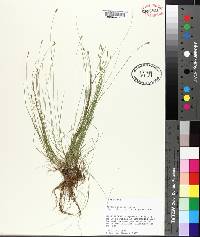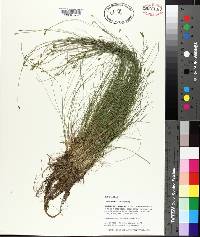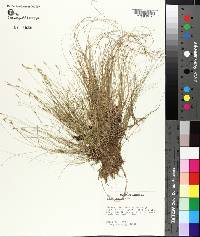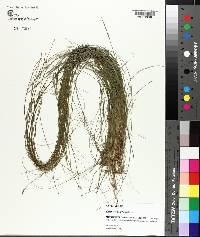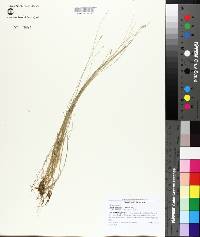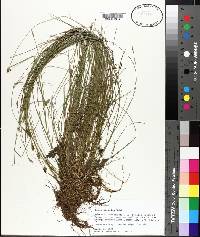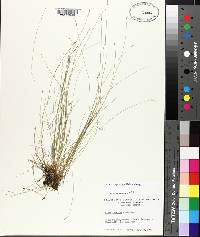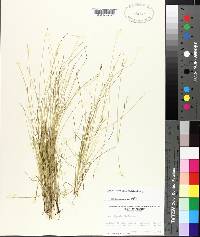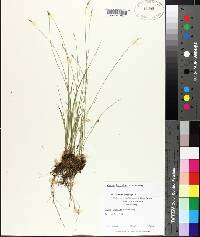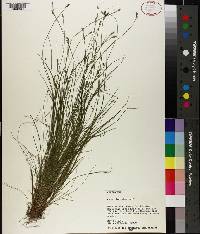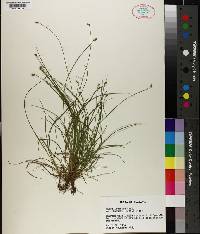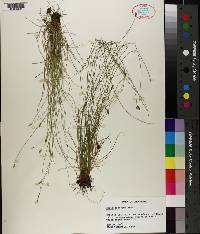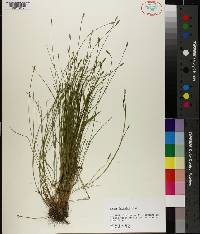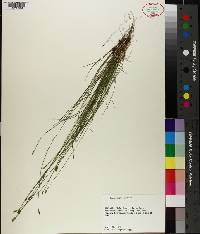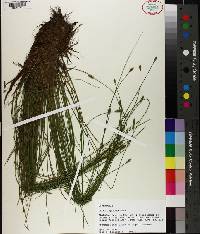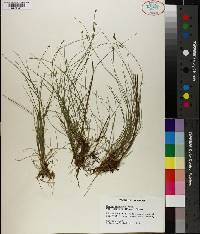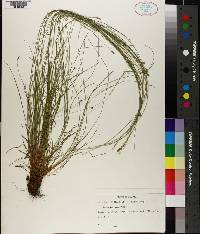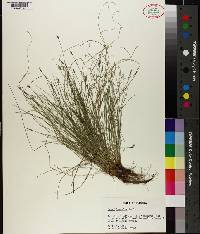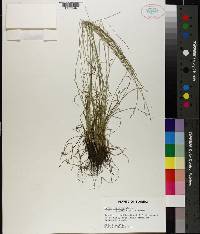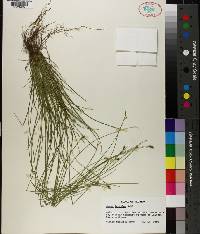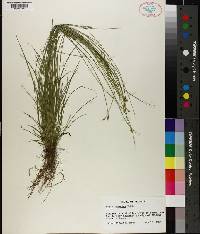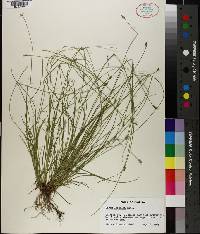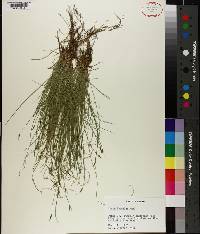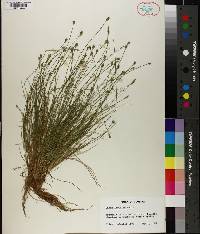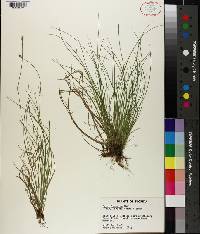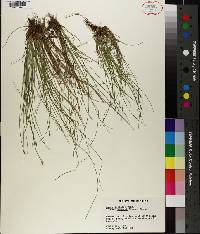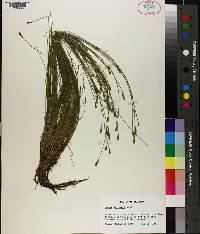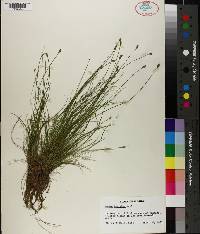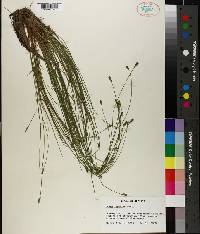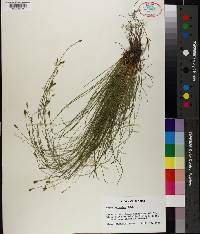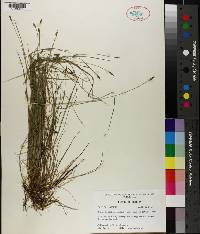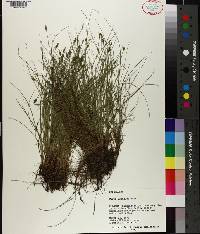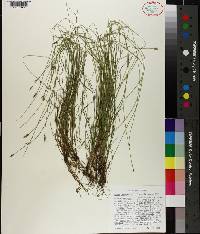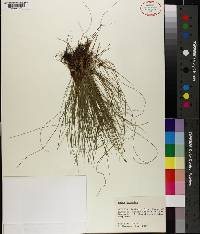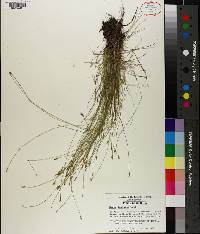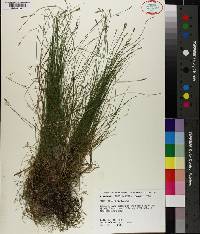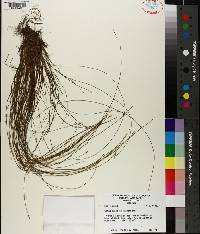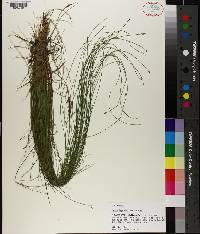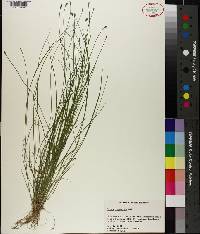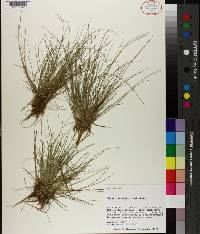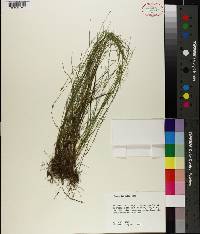
|
|
|
|
Family: Cyperaceae
Bristly-Stalk Sedge, more...bristlystalked sedge
[Carex polytrichoides] |
Rhizomes freely branched, often mat-forming, 0.6-1.6 mm in diam. Culms loosely erect, capillary, 10-70 cm. Leaf blades 1-2 per culm, lax, ± flat, 1-25 cm × 0.4-1.3 mm, soft. Spike oblong to narrowly oblong, 4-15(-18) × 2-4 mm, with 2-7 staminate flowers and 2-9(-13) pistillate flowers; staminate portion often short or occupying nearly entire spike. Pistillate scales 1/2 as long as perigynia, proximal scales sometimes exceeding perigynia or spike. Staminate scales almost hood-shaped, tightly clasping rachis. Perigynia slightly to strongly overlapping, with 2 marginal and 16-28 finer veins (plus others more faint), 2.4-4.9(-5.4) × 0.8-1.3 mm. Achenes oblong-ovoid, 1.3-1.9 × 0.7-1.2 mm. 2n = 50, 52. Fruiting Apr(mid Mar in Fla.)-Aug(-Sep). Mossy or wet woods, conifer swamps and bogs, wet, often calcareous (including subalpine) meadows, fens, swales, lakeshores, stream banks, also damp, shaded rock ledges, marshy fields, and swampy ditches; 0-2700 m; St. Pierre and Miquelon; Alta., B.C., Man., N.B., Nfld. and Labr., N.W.T., N.S., Nunavut, Ont., P.E.I., Que., Sask., Yukon; Ala., Alaska, Ark., Calif., Colo., Conn., Del., D.C., Fla., Ga., Idaho, Ill., Ind., Iowa, Ky., La., Maine, Md., Mass., Mich., Minn., Miss., Mo., Mont., N.H., N.J., N.Mex., N.Y., N.C., N.Dak., Ohio, Okla., Oreg., Pa., R.I., S.C., S.Dak., Tenn., Tex., Utah, Vt., Va., Wash., W.Va., Wis., Wyo.; Mexico; West Indies (Dominican Republic). Carex leptalea has the widest geographic range of any North American sedge. Plants vary in color, stature, length of spikes, length, shape, and degree of overlap of periginia, and color and shape of apex of pistillate scales (other minor characteristics are indicated in J. A. Calder and R. L. Taylor 1965 and B. Boivin 1967-1979). Three morphotypes probably warrant formal taxonomic recognition. Because they intergrade to some degree, the modern tendency is to treat them as only extreme phases in a wide-ranging, complex species. A major study is needed to clarify the taxonomy. The typical phase, Carex leptalea subsp. leptalea, tends to be a more slender plant with thinner culms, narrower leaves and smaller spikes and perigynia (2.5-3.5 mm) than subsp. harperi and subsp. pacifica. Its pistillate scales, which vary in shape of apex, are yellowish green to brownish, and its achenes are obtusely angled. That phase is quite uniform and occurs throughout much of the continent, extending south to the uplands of North Carolina, Tennessee, Missouri, South Dakota, New Mexico, and California. Small plants from Alaska, Yukon, Alberta, British Columbia, and eastward, var. tayloris, are extremes of the phase. The most distinct variant, Carex leptalea subsp. harperi [C. harperi, C. leptalea var. harperi], has longer [3.4-4.9(-5.4) mm], more slender perigynia that overlap more strongly and are subtended by whitish scales. Its spikes are, on the average, longer, and its achenes are sharply angled. The phase occurs from Florida to Texas, north to New Jersey, Pennsylvania, Indiana, and Missouri. Various authors have reported it from farther north, but it is doubtful whether subsp. harperi occurs beyond the range given. Carex leptalea subsp. pacifica [C. jimcalderi] resembles subsp. harperi in its longer perigynia [(3-)3.4-4.7 mm)] and proximal pistillate scales with the midvein excurrent into a cusp or awn, but differs in its brown-margined scales and obtusely angled achenes. This phase occurs only west of the Coast-Cascade Mountains from the Alaska Panhandle south through the offshore islands and mainland coast of British Columbia to Thurston County, Washington.
Stems densely clustered on slender, freely branched rhizomes, very slender, 1.5-6 dm; lvs shorter than the stems, slender but ±flat, 0.7-1.2 mm wide; spike 1, 0.5-1.5 cm, the terminal staminate part often short; pistillate scales obtuse to acute or short-awned, mostly shorter than the perigynia, or the lowest prolonged into a slender tip surpassing the perigynia; perigynia 1-10, 2.5-4.5 mm, appressed-ascending, often rather remote, membranaceous, elliptic or lance-elliptic, with a narrow, often substipitate, spongy base 0.5-1 mm, beakless, with 2 marginal nerves and many finer nerves on each face; achene trigonous, 1.3-1.8 mm, not filling the perigynium; rachilla wanting; 2n=52. Bogs and wet soil; Lab. to Alas., s. to Fla., Tex., and Calif. (C. harperi, a form with the perigynia to 5 mm) Gleason, Henry A. & Cronquist, Arthur J. 1991. Manual of vascular plants of northeastern United States and adjacent Canada. lxxv + 910 pp. ©The New York Botanical Garden. All rights reserved. Used by permission. |
This project was made possible in part by the Institute of Museum and Library Services [MG-70-19-0057-19].
Powered by Symbiota

